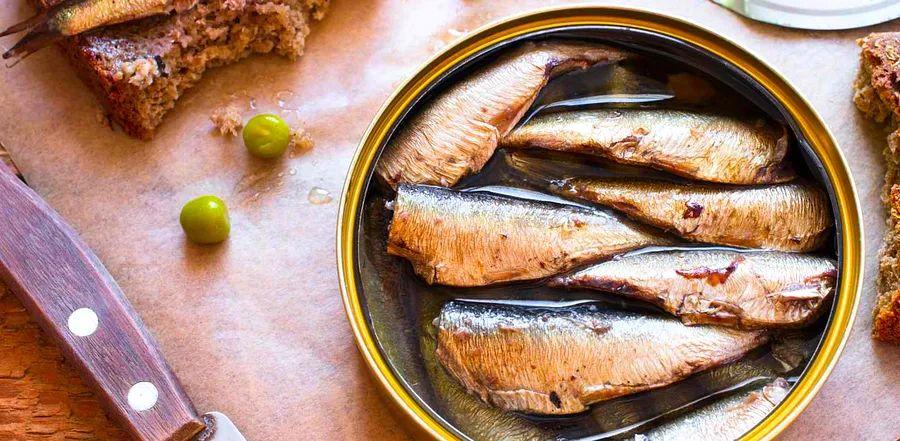Anchovies vs. Sardines: What Sets Them Apart?

Tiny canned fish — a savory, salty treat savored worldwide by pizza enthusiasts, tapas lovers, and maybe even your dad in the garage, attempting to keep his fishy snack a secret from the rest of the family.
Anchovies and sardines are the most common varieties of fish found in those small, rectangular tins. Perhaps because of their similar packaging and placement on store shelves, they are often confused with one another.
Although these fish share numerous similarities, including their sleek, silvery appearance, they are undeniably distinct species.
Similar Swimmers
Both anchovies and sardines are small, sleek, almost endearing oily fish that travel in large schools. They dwell in the deep ocean, far from the shore, feeding on plankton. With their silvery scales that reflect shades of green and blue, they live short but active lives, and their abundance in the water makes them vital to many marine species. It’s no surprise they’re often mistaken for each other!
Not only are anchovies and sardines packed with nutrients for the sea creatures that eat them, but they’re also a great source of iron, calcium, protein, and omega-3 fatty acids (which benefit brain health and promote heart wellness). Additionally, they’re low in mercury, making them a smart choice during pregnancy — if you're able to enjoy them at that time.
What else do they share? These budget-friendly, shelf-stable powerhouses of flavor are often underestimated.
What Are Anchovies?

piazzagabriella/Getty Images
Anchovies are found in over 100 different species. They thrive in warmer waters, though some varieties also inhabit freshwater or brackish environments. These fish are easily recognized by their sharp, pointy heads and large mouths, which distinguish them from sardines, which have a larger head and smaller mouth.
These small fish typically measure around 4 inches long and are available both fresh — usually whole with their heads — or preserved. In Asia, dried anchovies are particularly popular. Fresh anchovies are hard to find, however, as most are sold skinned, filleted, and preserved in olive oil or salt. This preservation process darkens the flesh to a reddish-brown or gray hue, giving them a slightly furry appearance.
The process of packing anchovies into tins is quite involved. They’re usually cured in brine for up to nine months, then pressed with bricks, which softens their bones enough to be eaten. While anchovies have white flesh, the dark color of the tin-packed fillets results from the curing process, which imparts a salty, intense flavor and a firmer texture.
White anchovies, known as "boquerones" in Spain, are marinated fillets with a pale, creamy flesh. They are packed in oil and vinegar brine to preserve their fresh appearance, offering a milder, cleaner flavor with a subtle saltiness, in contrast to their more intensely flavored, heavily processed counterparts.
Anchovies deliver an incredible burst of flavor, commonly used in dressings, sauces, and as toppings for salads or pizza.
What Are Sardines?

4kodiak/Getty Images
Similar to anchovies, sardines are available fresh or preserved, often descaled and fileted, then packed in olive oil, water, or even sauces like mustard or hot sauce. Sardines offer more versatility with their milder, smoother flavor, making them a great fit for a wide variety of dishes.
Unlike anchovies, sardines are typically canned with their skin and heads intact, though the skin can be easily removed. Their flesh remains light in color and, while their flavor is robust, it has a flakier texture with a delicate, buttery undertone. The gentle saltiness of sardines makes them taste somewhat similar to tuna, which often sits next to them on grocery store shelves.
Can Anchovies and Sardines Be Used Interchangeably?
While swapping one for the other isn't always a strict rule, anchovies and sardines can work as substitutes in certain recipes. The key lies in how they’re incorporated into the dish.
When grilling or frying fresh versions of either fish, feel free to choose whichever suits your taste. Both are naturally oily and crisp up nicely when cooked.
Both anchovies and sardines make a great topping for toast. If you prefer a brinier, more nuanced flavor, opt for sardines. For a stronger, saltier taste with more punch, anchovies are your best bet.

milanfoto/Getty Images
If the dish calls for the most common variety of either fish — namely tinned versions — it's best to stick with what’s typical. Tinned sardines are usually descaled but not deboned, offering a firmer texture and a more delicate flavor. In contrast, tinned anchovies are fully filleted and cured in salt, delivering a bold, umami-packed punch with a softer texture.
Fortunately, dishes featuring sardines often highlight them as the star of the show, while anchovies tend to serve as a background ingredient, adding depth or acting as a garnish. Swapping sardines for anchovies would likely overpower the dish. A canned tuna packed in oil makes a more fitting replacement for sardines, or, if available, white anchovies could work as a substitute.
On the other hand, you can replace anchovies with sardines on a one-to-one basis, though the result will be milder. For recipes where anchovies are used in sauces or similar applications, anchovy paste — typically found near the tomato paste in stores — is the best substitute.
It's also worth noting that these two fish behave quite differently when cooked. Sardines, being meatier, retain their structure well, while anchovies dissolve, making them perfect for adding a savory touch. That irresistible tang in Caesar dressing? It’s all thanks to anchovies. Substituting sardines would not only alter the flavor, but the texture would likely turn out to be a disappointing mess.

1

2

3

4

5
Evaluation :
5/5